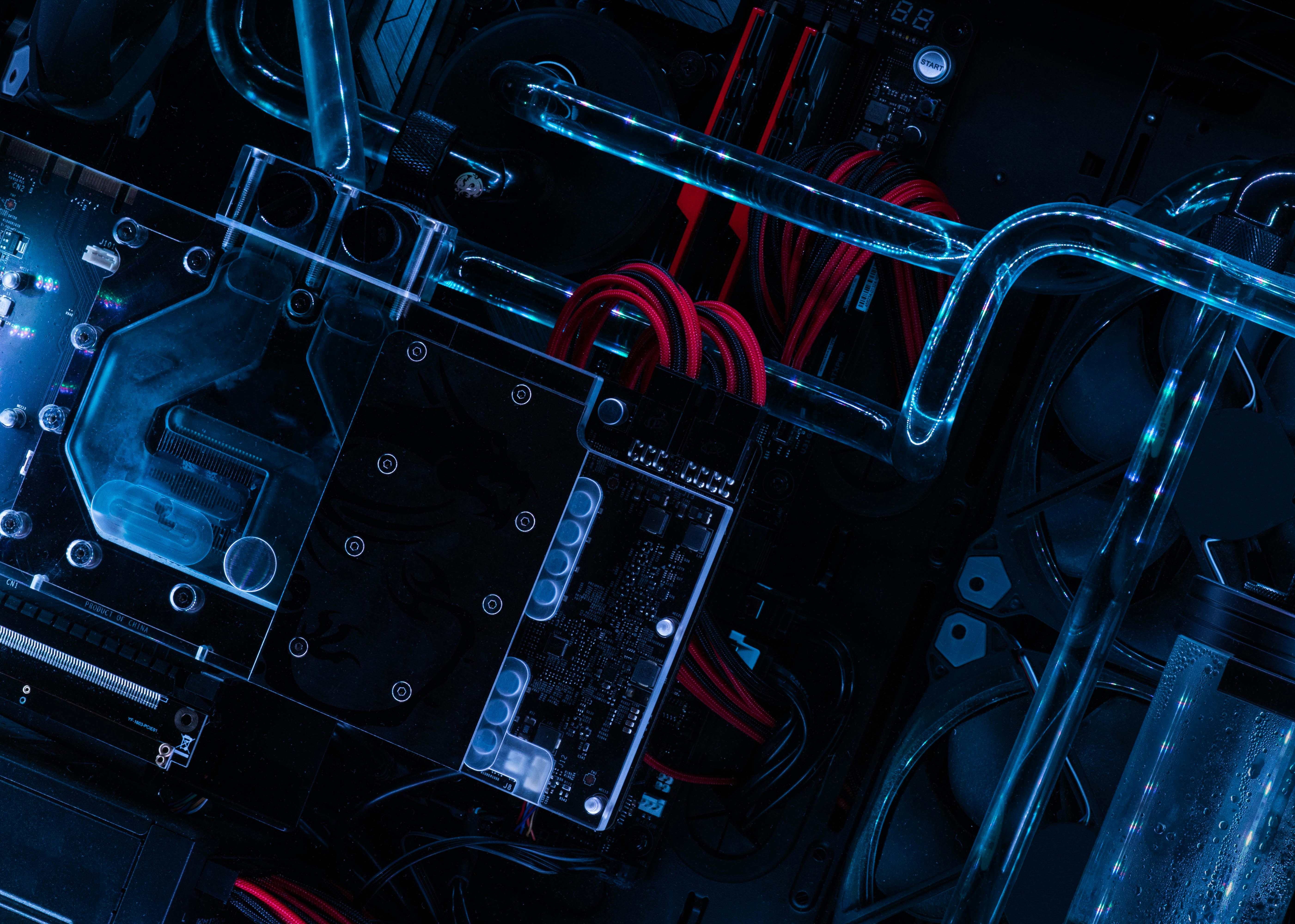
Tips for Staying Inspired: How Robotics Pros Fuel Creativity and Innovation
Robotics stands at a thrilling crossroads of mechanical engineering, software development, artificial intelligence, and electronics. From warehouse automation and surgical robotics to humanoid machines and planetary rovers, the field promises to reshape industries and everyday life. Yet, the daily work of developing, testing, and debugging complex robotic systems can be both intellectually demanding and sometimes repetitive. How do professionals—robotics engineers, researchers, designers, and software developers—remain creative and push boundaries when faced with constraints, regulations, and a relentless pace of innovation?
Below, we’ll explore ten practical strategies to help you stay inspired and continue delivering breakthroughs in robotics. Whether you’re building mobile robots, perfecting collaborative arms, or researching soft robotics for medical applications, these tips will guide you toward fresh insights and a renewed sense of purpose.
1. Reconnect with Robotics’ Grand Vision
Amid the day-to-day tasks—design reviews, debugging code for motion control, stress-testing hardware—it’s easy to lose sight of the bigger impact that robotics can have. Reground yourself in the field’s monumental potential to reignite your creativity and deepen your commitment.
Focus on Real-World ImpactConsider the problems your robot helps solve, from reducing dangerous tasks in heavy industries to performing accurate surgeries with minimal invasiveness. Recalling these benefits can bring fresh motivation to routine tasks like calibrating sensors or refining algorithms.
Draw Inspiration from Landmark AchievementsReflect on iconic moments, such as NASA’s Mars rovers or Boston Dynamics’ agile robots. Studying these achievements reminds you that incremental improvements—from iterative hardware tweaks to better motion planning—can lead to monumental changes in how we live and work.
Aim for Long-Term TransformationsVisualise the future roles of your robotics project: supporting an ageing population, advancing space exploration, or optimising supply chains. Anchoring your daily work in these broader transformations can keep your creative engine running.
Why This HelpsFocusing on the grander objectives of robotics reframes seemingly small tasks as stepping stones toward game-changing possibilities. This perspective helps you discover fresh ideas—like new materials, design methodologies, or control paradigms—aligned with a bigger mission.
2. Embrace Interdisciplinary Collaboration
Robotics is inherently multidisciplinary, blending mechanical design, AI-driven decision-making, sensor fusion, and more. When you proactively seek out people from different backgrounds, you often uncover new problem-solving techniques and spark imaginative solutions.
Partner with AI or Computer Vision ExpertsIf you’re more hardware-focused, collaborating with software specialists or AI researchers can expose you to advanced perception systems or machine learning methods that push your robot’s capabilities.
Involve Mechanical and Electronics TeamsOvercoming challenges like weight distribution, power efficiency, or heat dissipation may require a synergy of mechanical design, electronic integration, and software logic. Frequent discussions prevent siloed designs and pave the way for clever engineering shortcuts.
Engage End Users or Domain ExpertsIf you’re developing healthcare robots, talk to nurses or surgeons. If you’re building warehouse automation, chat with operations managers. These frontline perspectives often reveal usability needs, operational bottlenecks, and integration points you haven’t considered.
Attend or Host Collaborative WorkshopsOrganising small in-house events or participating in local robotics meetups fosters cross-disciplinary dialogue, exchanging ideas about motion planning, environment sensing, or even compliance with industry standards.
Why This HelpsBringing diverse skill sets into the conversation fuels innovative leaps—because each person spots problems or improvements missed by others. The result is a more holistic, creative approach to robotics design and development.
3. Pursue Side Projects for Creative Freedom
Mainline robotics projects often operate under strict milestones and budgets, leaving limited scope for risk-taking. Side projects give you the freedom to experiment with fresh hardware, untested algorithms, or unusual form factors—without the immediate consequences of a corporate or academic setting.
Tinker with Affordable KitsLow-cost microcontrollers (like Arduino, Raspberry Pi), open-source robotics platforms, or 3D-printed parts let you build small prototypes. This hobby-level approach helps you quickly test ideas—like unique grippers or novel sensor fusion methods.
Explore Unconventional Materials or TechniquesPerhaps you’re curious about soft robotics using silicone, or bio-inspired designs. Experimenting on a small scale with different frameworks (ROS, TensorFlow for robotics) or using unfamiliar libraries can spark fresh insights.
Document Your DiscoveriesKeep a notebook or create short online write-ups (GitHub projects, personal blog posts) to record successes and failures. You’ll appreciate this archive when a side project concept unexpectedly aligns with a future professional task.
Focus on FunDon’t sweat scale or commercial viability. If you stumble onto something promising—like an ingenious sensor calibration trick—you can adapt it later. The key is nurturing curiosity, which fosters out-of-the-box solutions in your main robotics work.
Why This HelpsSide projects remove formal constraints and encourage creative “play.” By exploring robotics on a smaller, personal level, you’ll gain new methods or technologies that can refine or revolutionise your official projects down the line.
4. Participate in Hackathons and Competitions
Hackathons and robotics competitions provide an adrenaline-fuelled context where teams build or refine prototypes under time pressure. This environment pushes you to solve issues quickly, test bold ideas, and glean insights from other competitors.
Choose Themed ChallengesSome events focus on humanoid robots, while others spotlight drone competitions or swarm robotics. Picking a theme that intrigues you—like agricultural automation or robotics for disaster relief—ensures higher motivation.
Assemble a Diverse TeamCollaborate with mechanical engineers, data scientists, control system experts, and even UI/UX designers. This cross-disciplinary synergy multiplies your group’s creativity and can help address hardware-software integration swiftly.
Prototype RapidlyHackathons typically last from a day to a weekend, so building a minimal viable prototype (MVP) is paramount. This approach clarifies your core goals—whether it’s a stable walking gait or a functioning pick-and-place routine—and fosters ingenuity under constraints.
Study Winning SolutionsPost-event, reading top teams’ design notes or code can illuminate advanced motion-planning techniques, novel sensor fusion approaches, or tips for robust hardware assembly in short timeframes.
Why This HelpsRobotics hackathons compress development cycles, forcing creativity and forging unique solutions within real-time limitations. Even if you don’t “win,” you’ll walk away with fresh knowledge, networking contacts, and potential strategies to integrate into your main robotics tasks.
5. Stay Abreast of Frontier Research and Industry Trends
Robotics spans a vast spectrum, from reinforcement learning for autonomous navigation to new mechanical joints and exotic sensors. Keeping tabs on emerging research and commercial innovations sparks fresh perspectives for your own projects.
Scan Academic Journals and PreprintsPublications like The International Journal of Robotics Research, IEEE Transactions on Robotics, or open preprint servers (e.g., arXiv’s robotics category) showcase state-of-the-art designs, control algorithms, and theoretical models.
Follow Influential Labs and CompaniesR&D groups at MIT’s CSAIL, ETH Zurich, or commercial pioneers (like Boston Dynamics) often share videos and papers featuring advanced robotics. Their behind-the-scenes insights can challenge your assumptions and inspire new prototypes.
Attend Conferences, Webinars, or WorkshopsEvents such as ICRA, IROS, or RoboBusiness gather the global robotics community, unveiling frontier projects and fostering dialogue. Listening to paper presentations, demo sessions, and panel discussions can prompt you to pivot or refine your own solutions.
Join or Organise Reading GroupsHosting weekly or monthly sessions with colleagues to dissect a recent paper keeps everyone updated and fosters critical thinking about new methodologies, hardware designs, or software frameworks.
Why This HelpsContinuous exposure to cutting-edge knowledge ensures you don’t stagnate or reinvent solutions. You’re more likely to adopt advanced locomotion controllers, incorporate novel sensor technologies, or refine your design strategy, keeping your robotics work ahead of the curve.
6. Cultivate a Culture of Knowledge Sharing
A robotics project involves many specialisms—mechanical, electrical, firmware, AI, system integration. Without systematic knowledge exchange, insights remain siloed, limiting your creativity and the overall success of your robot’s design.
Host Internal SeminarsRotate short presentations on interesting topics—maybe an engineer discusses advanced motor driver calibration, or a software dev explains a new path-planning library. These sessions spark cross-team idea generation.
Maintain a Shared RepositoryDocument design best practices, code snippets, sensor configurations, and calibration procedures. When updates or improvements are discovered, adding them to this repository ensures everyone benefits immediately.
Encourage Peer ReviewsHaving your hardware layout critiqued by another mechanical engineer or your control algorithm dissected by a software colleague can reveal hidden flaws or missed optimisation tactics.
Co-Locate Teams or Have Frequent SyncsIf possible, keep mechanical, electronics, and software folks together physically—or hold weekly multi-team syncs. Regular face time fosters spontaneous conversations that can lead to creative breakthroughs.
Why This HelpsWhen knowledge moves freely, synergy flourishes. Mechanical, electrical, and software insights combine, creating robust, inventive approaches—like smoother motors, better sensor data usage, or more efficient AI-based control strategies.
7. Embrace and Learn from Failures
In robotics, things rarely work perfectly on the first try. Motors may overheat, sensor readings might drift, or untested code can crash. Adopting a mindset that treats each failure as a step toward deeper understanding can kindle continuous innovation.
Conduct Post-Mortem SessionsWas a manipulator dropping objects unexpectedly? Gather data, check logs, and involve relevant team members. Diagnosing the root cause—like a torque overload or incorrect sensor threshold—keeps your next version stronger.
Document Negative ResultsEven small fiascos—like a local servo meltdown or a path-planning approach failing—offer learning points. Logging them with details about environment conditions and system states can prevent reoccurrence and spark new design directions.
Ask “What If?”Could partial improvements in hardware or code mitigate the issue? Could a different sensor arrangement or AI algorithm fix the root cause? Approaching problems with curiosity can open up alternative solutions or design changes you hadn’t considered.
Stay FlexibleA design may not achieve the agility or precision you hoped for. Instead of discarding it entirely, adapt the concept to a different purpose. For instance, a suboptimal manipulator might still be ideal for simpler pick-and-place tasks in controlled environments.
Why This HelpsAcknowledging failures as feedback fosters creativity. You deepen your grasp of system behaviours, refine your approach iteratively, and often discover new angles—like improved mechanical design, better control logic, or alternative sensor arrays.
8. Strengthen Non-Technical Skills
High-level programming, mechanical design, and electronics knowledge are essential in robotics, but soft skills—like communication, leadership, and empathy—can determine whether your innovations resonate and your team thrives.
Sharpen Communication and StorytellingWhether you’re briefing executives or presenting to a university committee, translating complex robotics concepts into compelling narratives is key. This clarity often invites feedback and fosters stakeholder buy-in that can spark fresh project ideas.
Master Team CoordinationRobotics projects can be large and cross-functional, so implementing project management methodologies (Agile, Kanban, or Lean) helps keep milestones on track. Structured processes free up mental space for creative breakthroughs.
Develop Emotional IntelligenceRecognising team members’ frustrations with debugging or deadlines, and offering support, creates a trusting environment where people feel comfortable proposing unconventional solutions to tough problems.
Engage Stakeholders EffectivelyWhether it’s prospective users, clients, or regulators, listening to their concerns can highlight constraints or user needs you hadn’t prioritised—often leading to more user-friendly interfaces or improved safety features.
Why This HelpsBy refining your communication and leadership capabilities, you unite cross-functional teams around innovative goals, harnessing broader perspectives. This synergy fosters novel thinking and solutions that purely technical skills alone might not achieve.
9. Seek or Become a Mentor in Robotics
Mentorship—be it learning from a seasoned robotics specialist or guiding newcomers—brings fresh perspectives and fosters an environment of lifelong growth.
Find a Mentor in Emerging SubfieldsIf you’re exploring soft robotics, advanced AI-based control, or human-robot collaboration, a mentor who’s tackled these domains can steer you around known pitfalls and recommend advanced libraries or design frameworks.
Offer Guidance to JuniorsTeaching basic robotics—like sensor integration, kinematics, or real-time system constraints—reinforces your own foundational knowledge. Answering novices’ questions can unearth potential improvements in your existing methods.
Join Formal SchemesProfessional bodies, robotics societies, or academic institutions frequently host mentorship programs. Participating ensures structured check-ins, well-defined learning targets, and a built-in network of experts.
Define Clear GoalsMentorship thrives on clarity—if you’re the mentee, aim for specific skills or domain knowledge. As a mentor, tailor advice to help your mentee tackle real projects or navigate career paths. This focus keeps sessions productive.
Why This HelpsMentorship programs accelerate learning, reveal new approaches, and keep knowledge flowing. Mentees gain advanced insights, while mentors revisit core principles—often triggering creative ideas by seeing robotics through a fresher lens.
10. Anchor Your Work in Real-World Impact
While robotics can be an exciting mix of engineering and science, reminding yourself of tangible outcomes can propel you forward, ensuring your creativity aligns with practical solutions that genuinely matter.
Collaborate with Industry or LabsWorking closely with manufacturing facilities, healthcare providers, or research institutions can highlight real constraints (e.g., environment conditions, safety regulations) and urgent pain points that robotics can alleviate or solve.
Track and Share Success MetricsWhether your robot reduces production time by 30% or enables more precise surgical incisions, documenting these achievements keeps the team motivated and encourages continuous improvement.
Tackle Societal ChallengesIf possible, direct your robotics innovations toward critical areas like assistive devices for the disabled, drones for disaster response, or agricultural automation to combat labour shortages. Purpose-driven projects spur creativity.
Iterate and EvolveEven if your design is successful in one environment, consider how it can be adapted or scaled. This iterative mindset fosters a culture where you keep seeking the next challenge, fueling ongoing innovation.
Why This HelpsTying your engineering and R&D to real-world needs fortifies your sense of purpose and clarity. Observing your robot’s effect—improving safety, enhancing efficiency, or aiding healthcare—creates a virtuous cycle of creativity, where each success spurs you to aim higher.
Conclusion: Sustaining Creativity in the Fast-Moving World of Robotics
Robotics is redefining how machines interact with the physical world, from factory floors to operating theatres and beyond. Yet, a field that demands cutting-edge engineering and complex problem-solving can drain your enthusiasm if you don’t nurture your creativity deliberately. By incorporating these ten strategies, you can reinvigorate your approach:
Reconnect with the Grand Vision—Remember how robotics could transform lives and industries.
Collaborate Across Disciplines—Merge insights from mechanical design, AI, electronics, and user feedback.
Explore Side Projects—Experiment in a low-pressure environment to spark unconventional solutions.
Join Hackathons—Develop prototypes quickly while learning from diverse teammates.
Stay Current with Frontier Research—Adopt or adapt next-generation concepts from top labs or journals.
Foster Knowledge Sharing—Encourage open communication so mechanical, electrical, and software insights cross-pollinate.
Embrace Failures—Turn missteps into stepping stones through reflection and adaptation.
Sharpen Non-Technical Skills—Use communication, empathy, and project management to enhance team creativity.
Engage in Mentorship—Whether learning or teaching, expand your perspective for fresh ideas.
Aim for Real-World Impact—Stay focused on tangible benefits to drive purposeful, innovative design.
With these principles in mind, your daily tasks—debugging code, refining mechanical joints, or calibrating sensors—gain deeper significance, fuelling breakthroughs that carry you closer to the robots of tomorrow. For more resources, networking, and career opportunities within the robotics domain, visit RoboticsJobs.co.uk. Together, let’s keep pushing the boundaries of what’s possible, one servo, sensor, and line of code at a time.


